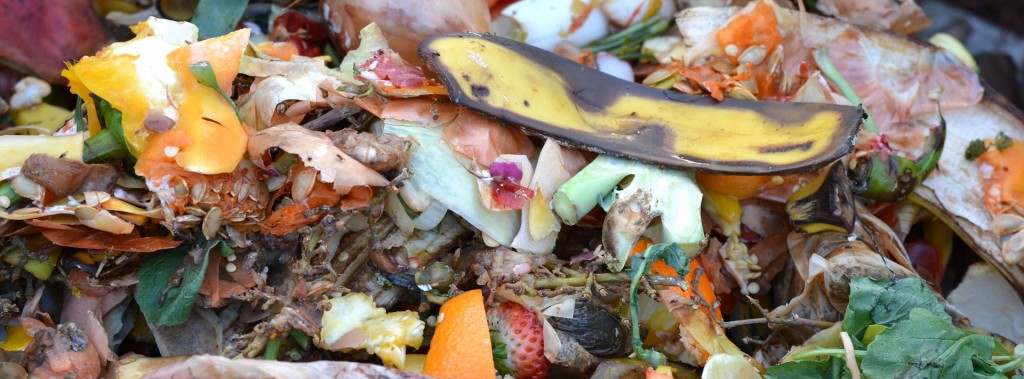News
Around 8 million items of litter enter the marine environment every day
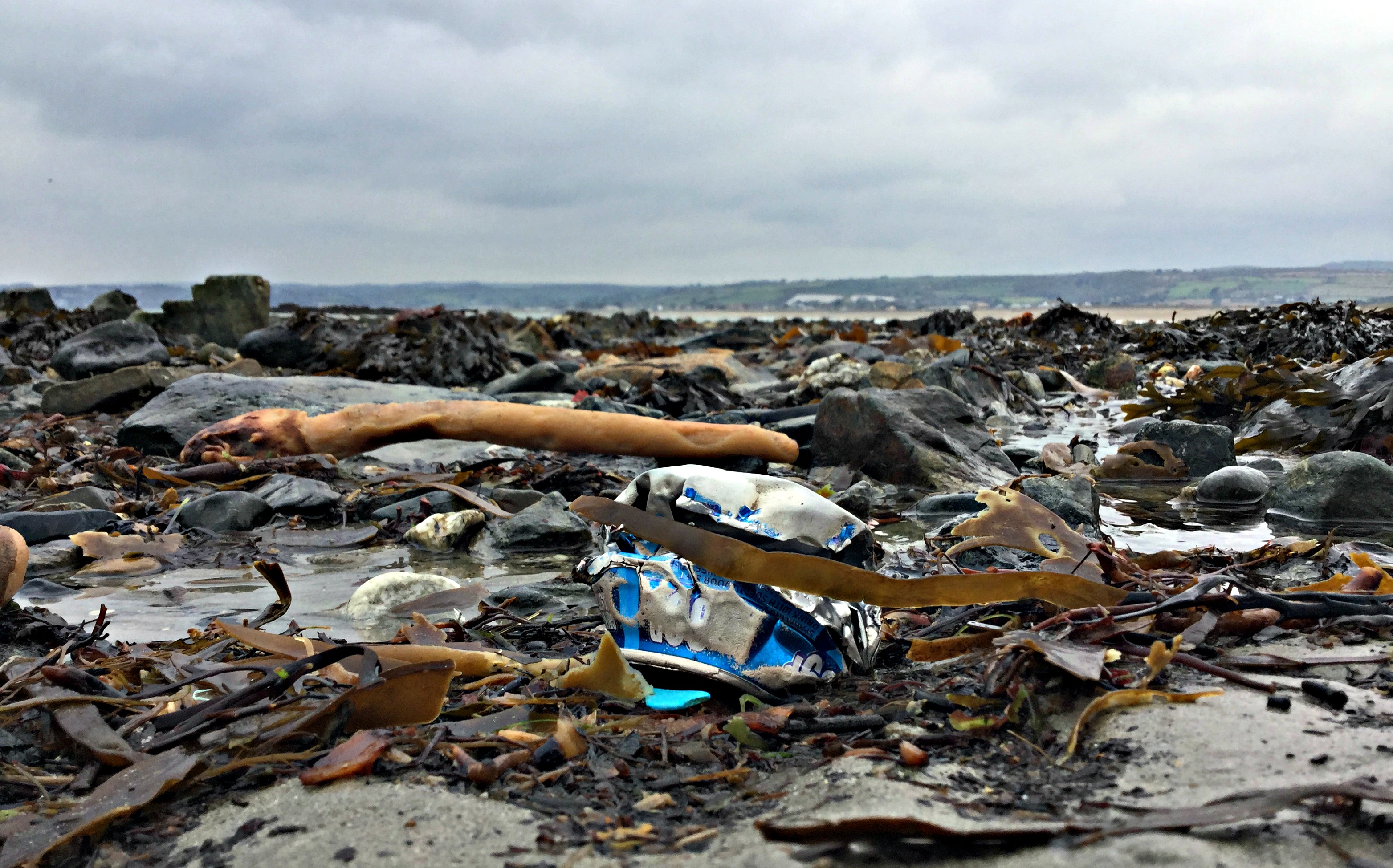
I’m sure the headline of this article has caught your attention.
But marine litter doesn’t really make a difference to your or me does it? It’s just makes places look unpleasant.
It actually does affect us, in lots of different ways: it can poison the water, kill organisms, and even poison us.
Scottish fishing vessels have surveyed:
- 86% restricted catch due to marine litter
- 82% had catch contaminated
- 95% snagged gear on debris in water
Populations of commercial fish stocks are declining because of the bioaccumulation of litter-related toxins. For example, sewage goes into the ocean every day and contains bacteria and viruses, and then you have the nutrients entering from agricultural wash off leading to algal blooms and dead zones. Fifty years ago there were only 49 known ocean dead zones… now there is over 400 worldwide.
https://youtube.com/watch?v=a8ae2vq45eA
Marine litter is a global issue, but all is not lost. Some dead zones can be temporary and repaired, but we need to change our ways as a species now. If we work together we can really make a difference.
Every year there are new legislations being passed to limit the amount of litter entering our waters. But there is still so much left to be done and we can make a difference.
There is so much you can do!
- Talk to your children: Explain to them in simple terms the effects of their litter and the importance that they clean up after themselves. I’ve linked a helpful site with ways to discuss the situation with young children.
- Clean up after yourselves: When you are out make sure you clean up your own litter (if possible you could clean up some other litter too – only footprints should be left).
- Litter picks: Why not start a day out by joining a local litter pick? It doesn’t even have to be at a beach! When you attend a litter pick make sure you have the correct precautions such as gloves and sturdy shoes, and please keep an eye on any children taking part, because you never know what they could find
- In 2014 Surfers against Sewage (SAS) organised 335 beach clean-ups and received over nine thousand volunteers in the UK. Their goal is to have reduced litter on UK beaches by 50% by 2020, a goal which is easily reachable if we all work together and volunteer. There is an estimated 41,146,380 pieces of marine litter on the British coast line. Sounds like an impossible goal, huh? Actually, in 2014 SAS collected almost 60 tonnes of litter. To learn more about SAS litter picks and how you can organise your own please click on this link: SAS beach clean campaign
- Internationally there is www.oceanconservancy.org who are working to organise international litter picks each year. This year it will be held on September 17th 2016. The site has some great information about how to reduce your litter effect for individuals and even businesses so why not check them out and sign their litter pick pledge.
- Use less plastic: Plastic bags can take anywhere from 150 years to over a thousand before they degrade. Plastic bage are not biodegrade though; instead they are broken down by light into tiny fragments of plastic, which are toxic, and are known as microplastics. According to Greenpeace there are an estimated 1,000,000 birds, 100,000 turtles, and countless other sea organisms dying each year from ingesting plastic bags alone. The bags are mistaken for jellyfish and other forms of edible sea creatures. Then you have microplastics which can be formed from the breakdown of larger plastics, but are also placed in products – like the ones in face scrubs and toothpastes, for example. Due to the tiny size it’s bypassed by water treatment and is washed down to the rivers, streams, and eventually the ocean. To see what different products contain microplastics look at this link.
- Compost: Remember earlier I mentioned algal blooms? Well they can be caused by chemicals in the food we throw away or wash down or drains.
If you have the room and the time (it’s really simple) you could set up a compost heap, which not only reduces the amount of organic matter going into our oceans, but also can be used instead of artificial fertilizers.
Some easy steps for setting up a home compost:
- A home compost bin should be at least 1 metre cubed, with a lid to prevent rain entering.
- Ideally site your compost bin in a reasonably sunny site on bare soil.
- Bottomless bins are better as the allow earthworms to enter and speed up the process.
- Lots of food waste can be used to make compost, except meat/fish products, dairy products, grease/oil or bones.
- The smaller your scraps are cut the quicker then can decompose.
- You can compost peelings, egg shells, hair, small amounts of paper/softcard, plants, and tea/coffee particles.
- Keep filling it!
- Composting can take weeks or months depending on how much air and moisture are present.
- The compost is ready to use when it is crumbly in appearance and has a slightly earthy smell.
- Spread away!
This isn’t an extensive list of how you can reduce the amount of litter going into the ocean: it’s only the tip of the iceberg, but it’s a start.
Article sources:
Marine Litter – An Analytical Overview – UNEP 2005
http://www.sas.org.uk/wp-content/uploads/SAS-Marine-Litter-Report-Med.pdf
Gear News
Go anywhere with Stahlsac
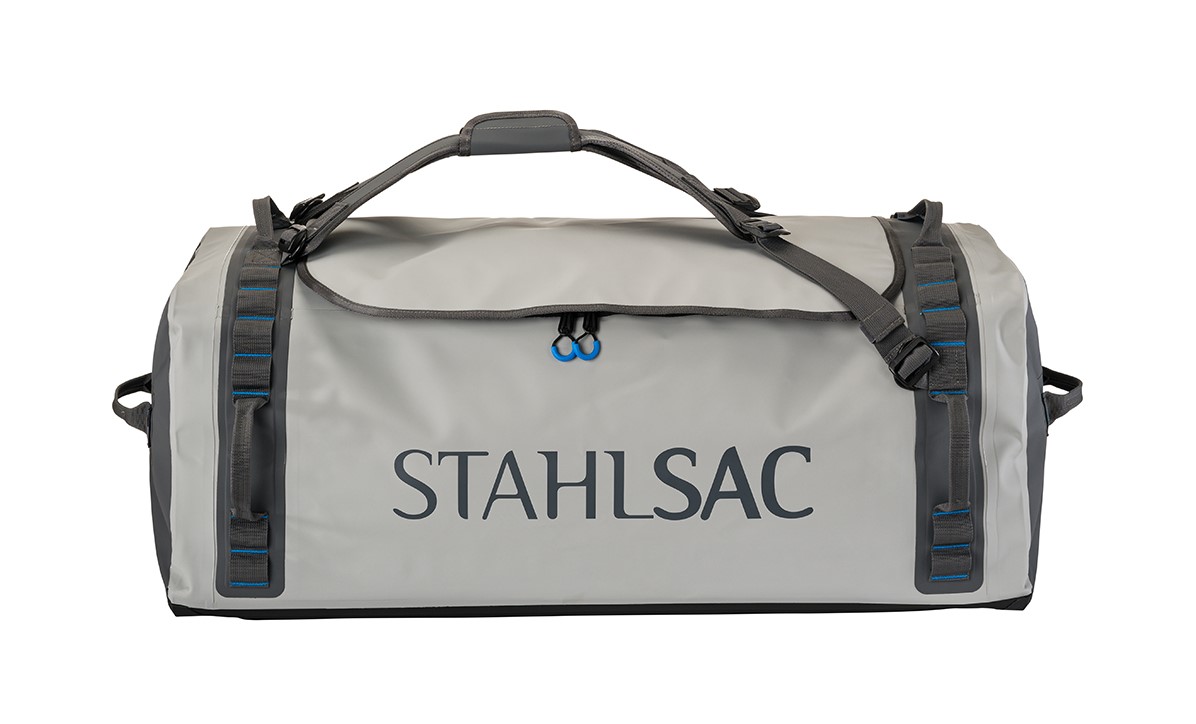
Stahlsac dive bags and travel luggage are built for our community of divers, surfers, kayakers and outdoor explorers who need bags that are constructed with durability, toughness, and 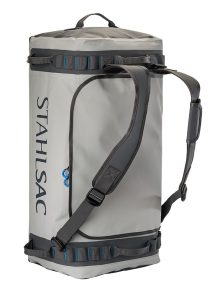 the highest quality the industry has ever seen. We were founded by one man determined to build better watersports and dive bags, and today, that mission is carried on by many. Adventure doesn’t just present itself; it requires discovery. When we design dive bags, we make sure they are tough enough for you to explore in all conditions—warm and cold, wet and dry—to the nearest and farthest reaches of the earth. And for those times you want to push the boundaries of adventure, Stahlsac dive bags make sure you can truly GO ANYWHERE.
the highest quality the industry has ever seen. We were founded by one man determined to build better watersports and dive bags, and today, that mission is carried on by many. Adventure doesn’t just present itself; it requires discovery. When we design dive bags, we make sure they are tough enough for you to explore in all conditions—warm and cold, wet and dry—to the nearest and farthest reaches of the earth. And for those times you want to push the boundaries of adventure, Stahlsac dive bags make sure you can truly GO ANYWHERE.
Abyss Duffels
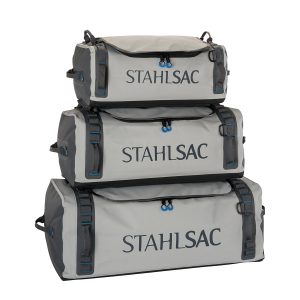 Made to be your partner-in-crime on every adventure, Stahlsac’s Abyss Duffels protects your gear from Mother Nature’s worst. Tough and 100% waterproof with double-TPU nylon material that shrugs off daily wear-and-tear, and RF-welded seams further boost the bag’s potential for lifelong exploring. Get Wet. Get Lost. Go Anywhere with Abyss.
Made to be your partner-in-crime on every adventure, Stahlsac’s Abyss Duffels protects your gear from Mother Nature’s worst. Tough and 100% waterproof with double-TPU nylon material that shrugs off daily wear-and-tear, and RF-welded seams further boost the bag’s potential for lifelong exploring. Get Wet. Get Lost. Go Anywhere with Abyss.
- A weatherproof duffel for trips, travel, and adventure
- Ultra-durable double-TPU nylon protects your gear
- Material repels water and keeps your equipment dry
- RF-welded seams are flush, tough, and waterproof
- Removable straps transform duffel into backpack
- Zippered internal stow compartments carry essentials
- External zippered flap is easy to open and close
- Welded external handles make transporting a breeze
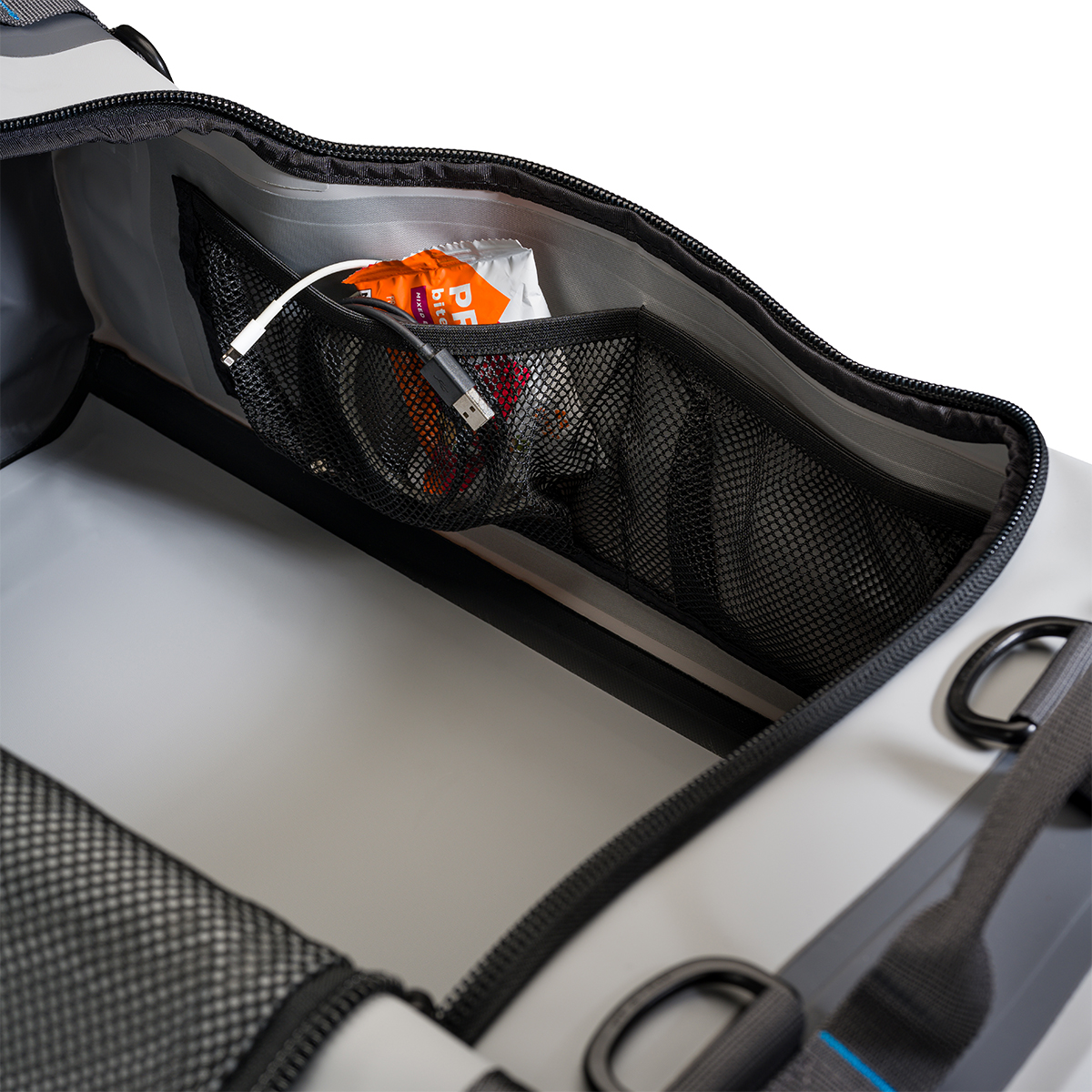
Panama Mesh Backpack
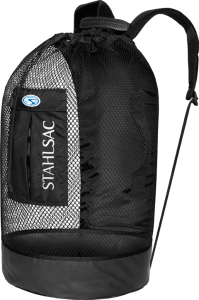 The most copied design in scuba diving, the Stahlsac Panama Mesh Backpack is the “original” design and features two high-density foam padded shoulder straps, extra durable polyester mesh, duffel bag handles and our unique zippered dry pocket inside that combines with a wet pocket outside. The bottom’s built from reinforced 18-gauge PVC nylon to combat the wear and tear of your active coastal lifestyle, and, as a bonus in every bag, we supply a 12″ x 12″ mesh drawstring satchel for extra stowing utility. Pack up your beach kit and go.
The most copied design in scuba diving, the Stahlsac Panama Mesh Backpack is the “original” design and features two high-density foam padded shoulder straps, extra durable polyester mesh, duffel bag handles and our unique zippered dry pocket inside that combines with a wet pocket outside. The bottom’s built from reinforced 18-gauge PVC nylon to combat the wear and tear of your active coastal lifestyle, and, as a bonus in every bag, we supply a 12″ x 12″ mesh drawstring satchel for extra stowing utility. Pack up your beach kit and go.
- Density foam padded shoulder straps
- Outside wet/dry pockets
- 2 Carry handles
- Tough, snag-resistant polyester mesh
- Reinforced PVC bottom
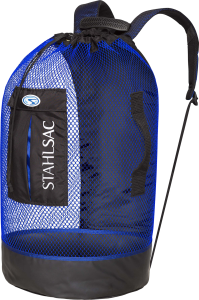
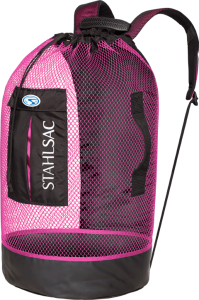
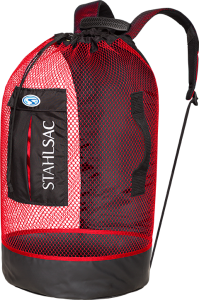
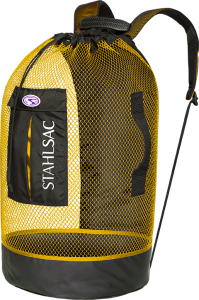
For more information about Stahlsac bags, visit www.stahlsac.com/dive-bags.
Sea & Sea is the home of Stahlsac and other leading diving brands in the UK.
Blogs
EXCLUSIVE: Jeff Goodman interviews Mark Spiers, CEO of New Scuba Diving Training Agency NovoScuba

In a video recorded exclusively for Scubaverse.com, Jeff Goodman interviews Mark Spiers, CEO of new scuba diving training agency NovoScuba.
Find out more about NovoScuba at www.novoscuba.com.
-

 News3 months ago
News3 months agoCapturing Critters in Lembeh Underwater Photography Workshop 2024: Event Roundup
-

 Marine Life & Conservation Blogs3 months ago
Marine Life & Conservation Blogs3 months agoCreature Feature: Swell Sharks
-

 Blogs2 months ago
Blogs2 months agoMurex Resorts: Passport to Paradise!
-

 Gear Reviews3 weeks ago
Gear Reviews3 weeks agoGEAR REVIEW – Revolutionising Diving Comfort: The Sharkskin T2 Chillproof Suit
-

 Blogs2 months ago
Blogs2 months agoDiver Discovering Whale Skeletons Beneath Ice Judged World’s Best Underwater Photograph
-

 Gear Reviews3 months ago
Gear Reviews3 months agoGear Review: Oceanic+ Dive Housing for iPhone
-

 News2 months ago
News2 months agoPADI Teams Up with Wellness Brand Neuro to Drive Ocean Change and Create a Blue State of Mind
-

 Marine Life & Conservation2 months ago
Marine Life & Conservation2 months agoSave the Manatee Club launches brand new webcams at Silver Springs State Park, Florida


